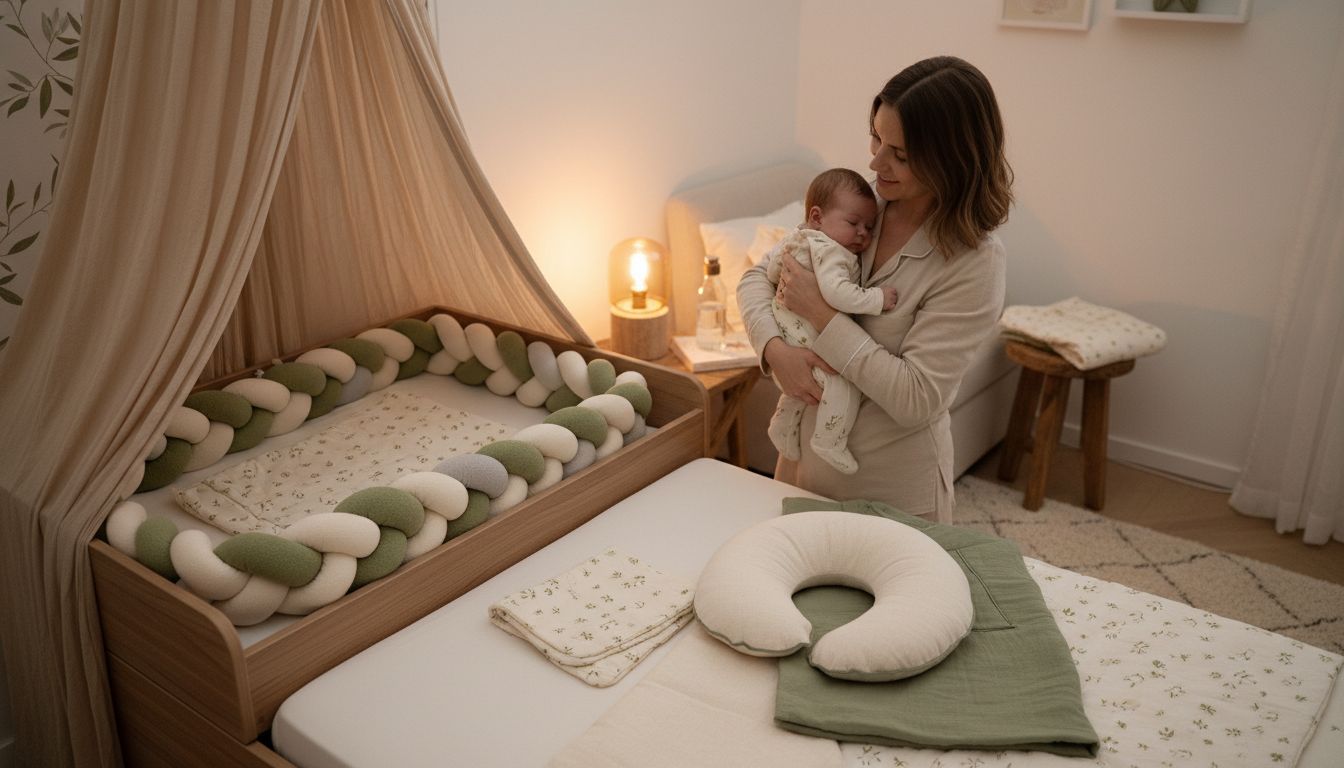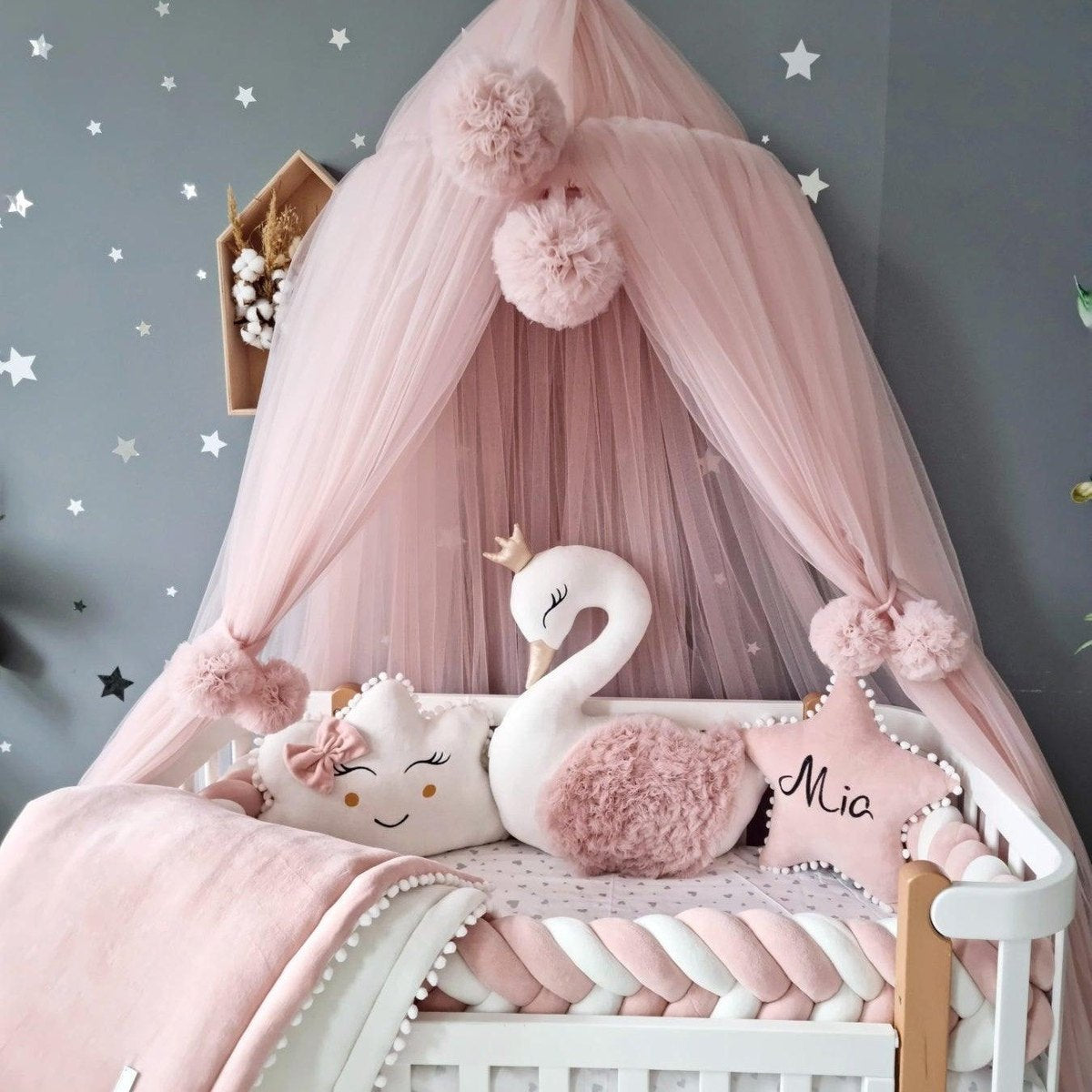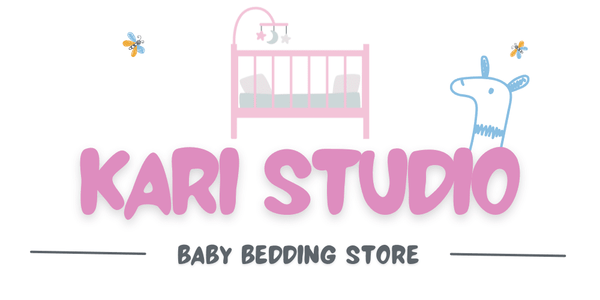Nearly 60 percent of parents worldwide report sharing a sleeping space with their infant during the earliest months. For many, co-sleeping feels like a natural way to keep babies safe and close, but confusion often arises about what this practice really means and how it affects infant well-being. By learning about both the realities and lingering myths of co-sleeping, parents can make informed choices grounded in current research and safety guidelines.
Table of Contents
- Defining Co-Sleeping And Common Misconceptions
- Types Of Co-Sleeping: Bed-Sharing Vs. Room-Sharing
- Claimed Benefits Of Co-Sleeping For Families
- Safety Guidelines And Leading Recommendations
- Comparing Co-Sleeping, Room-Sharing, And Independent Sleeping
- Cultural Perspectives And Frequently Asked Questions
Key Takeaways
| Point | Details |
|---|---|
| Co-Sleeping Arrangements | Co-sleeping includes room-sharing and bed-sharing, with room-sharing being the preferred method for infant safety. |
| Safety Recommendations | The American Academy of Pediatrics recommends room-sharing for at least six months to reduce SIDS risk by approximately 50%. |
| Benefits of Co-Sleeping | Co-sleeping claims emotional benefits and ease of nighttime care, particularly for breastfeeding, but safety guidelines must be strictly followed. |
| Cultural Variations | Co-sleeping practices vary globally, reflecting diverse familial and societal beliefs about child-rearing, necessitating a balance between cultural norms and safety. |
Defining Co-Sleeping and Common Misconceptions
Co-sleeping is a nuanced parenting approach involving parents and infants sleeping in close proximity, which encompasses two primary arrangements: room-sharing and bed-sharing. According to the Sleep Foundation, co-sleeping isn’t a one-size-fits-all practice but a spectrum of sleeping arrangements designed to support infant care and parental comfort.
Contrary to popular belief, co-sleeping does not automatically mean sharing the same bed. Room-sharing involves placing the infant’s crib or bassinet in the same room as parents, providing proximity while maintaining separate sleeping surfaces. Understanding Crib Mattress Safety becomes crucial when implementing this approach, ensuring the infant’s sleeping environment remains safe and comfortable.
Key distinctions in co-sleeping include:
- Room-sharing: Baby sleeps in the same room on a separate surface
- Bed-sharing: Baby shares the same sleep surface with parents
- Recommended practice: Room-sharing without bed-sharing
Experts consistently recommend room-sharing over bed-sharing to reduce risks associated with sudden infant death syndrome (SIDS) and ensure optimal infant safety. Parents interested in co-sleeping should prioritize creating a safe, separate sleeping environment that allows close monitoring and easy nighttime care.
Types of Co-Sleeping: Bed-Sharing vs. Room-Sharing
Co-sleeping manifests in two distinct approaches: bed-sharing and room-sharing, each with unique characteristics and safety considerations. According to the Sleep Foundation, these arrangements represent different strategies for maintaining proximity between parents and infants during sleep.
Bed-sharing involves parents and infant sleeping on the same surface, which pediatric experts consistently warn against due to significant safety risks. What is a Sleep Sack can be an alternative safety measure for infant sleep, providing a controlled sleeping environment that reduces potential hazards.
Comparative Overview of Co-Sleeping Types:
-
Bed-Sharing
- Infant sleeps in the same bed as parents
- Higher risk of accidental suffocation
- Not recommended by medical professionals
-
Room-Sharing
- Infant sleeps in separate sleep surface within parents’ room
- Reduces SIDS risk by 50%
- Recommended by pediatric associations
Room-sharing offers a safer alternative that maintains close parental proximity while minimizing potential sleep-related risks. By keeping the infant’s crib or bassinet near the parents’ bed, caregivers can quickly respond to nighttime needs while ensuring a separate, protected sleeping space. This approach balances infant safety with the emotional benefits of close nighttime contact.
Claimed Benefits of Co-Sleeping for Families
Co-sleeping has emerged as a controversial yet intriguing approach to infant care, with proponents highlighting several potential emotional and practical advantages. According to the Sleep Foundation, families exploring this sleeping arrangement often cite improved bonding, easier nighttime care, and enhanced infant comfort as primary motivations.
One of the most significant claimed benefits is simplified nighttime feeding. Understanding Safe Sleep Recommendations becomes crucial when implementing co-sleeping strategies. Breastfeeding mothers, in particular, report decreased disruption during nighttime feedings, as they can quickly respond to their infant’s hunger cues without fully awakening.

Key Claimed Benefits of Co-Sleeping:
- Enhanced parent-infant emotional connection
- More convenient nighttime feeding
- Potentially reduced infant stress and anxiety
- Improved parental responsiveness
- Easier monitoring of infant’s sleep patterns
Beyond practical considerations, co-sleeping advocates argue that the practice supports psychological development by providing consistent physical proximity. The intimate sleeping arrangement may help infants feel more secure, potentially leading to improved sleep quality and emotional regulation. However, parents must carefully balance these potential benefits with recommended safety guidelines to ensure optimal infant well-being.
Safety Guidelines and Leading Recommendations
Navigating co-sleeping safely requires strict adherence to expert guidelines designed to protect infant well-being. The American Academy of Pediatrics provides clear recommendations that prioritize reducing sudden infant death syndrome (SIDS) risks while maintaining close parental proximity.
Understanding Safe Sleeping Guidelines becomes critical for parents considering co-sleeping arrangements. According to leading pediatric research, the safest approach involves room-sharing without bed-sharing for at least the first six months of an infant’s life.
Critical Safety Recommendations:
- Always place infants on their back to sleep
- Use a firm, separate sleep surface
- Avoid soft bedding, pillows, or loose blankets
- Ensure room temperature remains comfortable
- Remove potential suffocation hazards
- Keep the sleeping area smoke-free
- Avoid co-sleeping if parents are excessively tired
Parents must create a controlled sleeping environment that minimizes risks while maintaining the emotional benefits of close nighttime proximity. This means investing in a separate, secure infant sleeping space within the parents’ bedroom, using safety-approved cribs or bassinets that meet current pediatric safety standards. The goal is to balance infant safety with the emotional connection that co-sleeping aims to support.
Comparing Co-Sleeping, Room-Sharing, and Independent Sleeping
Parents today face complex choices about infant sleeping arrangements, each with unique implications for safety, bonding, and developmental outcomes. Sleeping configurations represent more than just logistical decisions - they significantly impact family dynamics and infant well-being.
What is a Convertible Crib can provide flexible solutions for families navigating these sleeping strategies. According to leading pediatric research, the spectrum of sleeping arrangements offers distinct advantages and potential challenges that parents must carefully consider.
Comparative Sleep Arrangement Overview:
Here’s a comparison of the main infant sleeping arrangements:
| Feature | Bed-Sharing | Room-Sharing | Independent Sleeping |
|---|---|---|---|
| Sleep Surface | Same bed as parents | Separate crib or bassinet in parents’ room | Infant’s own room Separate crib |
| Safety Risk | High Not recommended |
Low Recommended by AAP |
Varies Requires monitoring |
| SIDS Risk | Increased | Reduced by ~50% | Standard risk |
| Parental Proximity | Very close | Close | Distant |
| Nighttime Feeding | Easiest | Convenient | Requires more effort |
| Emotional Bonding | High (with risks) | High | Moderate |
-
Room-Sharing
- Recommended by American Academy of Pediatrics
- Reduces SIDS risk by approximately 50%
- Allows easy nighttime monitoring
- Supports breastfeeding convenience
-
Independent Sleeping
- Promotes early sleep independence
- Requires more structured bedtime routines
- Potentially more challenging for nighttime feeding
- May increase parental sleep disruption
Ultimately, the most appropriate sleeping arrangement depends on individual family needs, infant temperament, and parental comfort levels. While expert recommendations strongly favor room-sharing during the first six months, families should remain flexible and attentive to their unique circumstances, prioritizing infant safety and emotional well-being above rigid adherence to any single approach.
Cultural Perspectives and Frequently Asked Questions
Co-sleeping practices reveal fascinating global diversity in infant care approaches, demonstrating how cultural backgrounds profoundly influence parenting strategies. While Western medical guidelines emphasize specific safety protocols, many international cultures have long-standing traditions of close nighttime proximity between parents and infants.
What is a Sleep Sack can provide additional context for parents navigating these cultural variations. According to sleep research, cultural perspectives on infant sleeping arrangements range from strict separation to intimate bed-sharing, each reflecting deep-rooted societal beliefs about child-rearing.
Frequently Asked Questions:
-
Is co-sleeping safe?
- Room-sharing is recommended
- Bed-sharing carries significant risks
- Follow AAP safety guidelines
-
How long should I room-share?
- Minimum of 6 months
- Ideally up to 12 months
- Consult pediatrician for personalized advice
Cultural insights reveal that co-sleeping is not a universal concept but a nuanced practice deeply embedded in familial and societal contexts. While American guidelines prioritize infant safety through structured sleeping arrangements, many cultures view close nighttime contact as fundamental to emotional development and family bonding. The key is understanding your family’s unique needs while maintaining rigorous safety standards.
Create a Safe and Cozy Nursery That Supports Your Co-Sleeping Journey
The article highlights the challenge many parents face finding a secure and comfortable sleep environment that balances the benefits of co-sleeping with critical safety guidelines. For parents embracing room-sharing or carefully planned bed-sharing, the right nursery essentials play a key role in reducing risks while fostering emotional bonding. Meeting goals like easy nighttime feeding and safe, breathable sleep surfaces requires thoughtful choices designed to protect your infant.
You can enhance your nursery space with premium baby bedding sets and accessories crafted from hypoallergenic, soft fabrics that prioritize safety and comfort. From braided crib bumpers to protective rail guards, each item supports your desire to create a nurturing nighttime setup that aligns with expert advice on safe sleeping practices. Explore our collection at baby bedding sets created with love and attention to detail.

Discover how personalized nursery essentials can make your co-sleeping experience more secure and cozy today. Visit our collection to choose high-quality, safe, and beautiful bedding solutions that help you respond quickly to your baby’s needs while ensuring peace of mind. Create a nursery environment that supports both your infant’s well-being and your parental comfort now.
Frequently Asked Questions
Is co-sleeping safe?
Room-sharing is considered safe and is recommended by experts. However, bed-sharing carries significant risks, including accidental suffocation. Always follow the American Academy of Pediatrics’ safety guidelines.
What are the benefits of room-sharing compared to bed-sharing?
Room-sharing offers a reduced risk of sudden infant death syndrome (SIDS) by approximately 50%, maintains close parental proximity, and allows easy monitoring of the infant, while bed-sharing increases safety risks.
How can I create a safe room-sharing environment?
To create a safe room-sharing setup, ensure the infant sleeps on a firm, separate sleep surface, avoid using soft bedding, and keep the sleeping area smoke-free. Always place the baby on their back to sleep.
How long should I practice room-sharing with my infant?
It’s recommended to room-share for at least the first six months, ideally up to twelve months. Consult with your pediatrician for personalized guidance based on your family’s needs.

